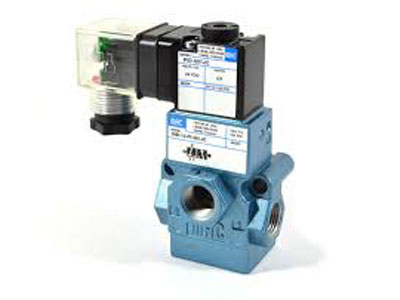Key Takeaway
Sizing a control valve involves determining the appropriate valve size to handle the required flow rate and pressure drop. The sizing process considers factors such as fluid properties, operating conditions, and system requirements.
Accurate sizing is essential for ensuring the control valve provides reliable flow regulation and complies with system specifications. It helps prevent issues such as cavitation, excessive pressure drop, and inefficient operation, ensuring optimal performance and longevity of the system.
Steps to Size a Control Valve
Sizing a control valve involves determining the required flow capacity to ensure optimal performance and efficiency. This process considers factors such as fluid properties, operating conditions, and system requirements.
Accurate sizing is essential for ensuring the control valve provides reliable flow regulation and complies with industry standards. It helps prevent issues such as overloading or inadequate flow.
Final sizing calculations must account for installation effects and system dynamics. This includes considerations for inlet and outlet piping, back pressure effects, and environmental factors.

Factors Affecting Control Valve Sizing
Control valve sizing depends on flow rate requirements, as oversized or undersized valves can cause inefficiencies. The pressure drop across the valve is another factor; proper sizing ensures smooth operation without cavitation or energy loss.
Fluid characteristics, such as viscosity, density, and temperature, also influence sizing. High-viscosity or high-temperature fluids may require specialized valve materials or larger sizes to handle operational demands effectively.
You May Like to Read
Tools and Techniques for Accurate Sizing
Accurately sizing control valves (CVs) is critical for ensuring the efficient and safe operation of any system where fluid flow must be precisely managed. Sizing a valve involves calculating the required flow rate and selecting a valve that can meet the demands of the application while minimizing energy loss, pressure drop, and system inefficiencies. Several tools and techniques can assist engineers in making accurate calculations when sizing control valves.
The first step in sizing CVs is determining the flow rate requirements for the specific application. This can be done using flow formulas that take into account the system’s pressure drop, pipe size, fluid properties, and the desired flow conditions. A common approach is to use the Valtek Equation, which relates the flow coefficient (Kv) of a valve to the flow rate and pressure drop across the valve. The Kv value represents the valve’s ability to pass a certain flow rate under specified conditions, and by knowing the pressure drop and fluid density, engineers can calculate the appropriate valve size. Tools like flowmeters and pressure gauges are also used to measure real-time system conditions, helping to determine the correct valve specifications.
Valve sizing software is another useful tool for engineers. These software programs are designed to help automate the sizing process by inputting various system parameters such as pressure, temperature, fluid type, and desired flow rate. The software can then recommend the most appropriate valve size, type, and configuration for the system. It can also simulate different operating conditions, ensuring that the chosen valve performs optimally under varying scenarios. Additionally, manual charts and graphical aids can be used as a quick reference for valve sizing, though these tools may be less precise than software-based calculations.
Common Mistakes to Avoid
When sizing a control valve (CV), one of the most frequent errors is selecting the wrong valve size. An oversized valve can cause excessive pressure drops and inefficiencies, while an undersized valve might not handle the required flow rate, leading to poor performance or system failure. To prevent this, it’s crucial to consider factors like flow rate, pressure conditions, and the specific application requirements during the selection process. Incorrect valve sizing can also cause issues like cavitation, which may lead to erosion and equipment damage.
Another common mistake is neglecting the influence of fluid properties, such as temperature and viscosity. These factors can significantly impact the valve’s ability to function effectively, and ignoring them can result in operational problems. For example, high-viscosity fluids require valves with specialized materials and larger sizes to ensure smooth flow. In addition, if the valve is exposed to extreme temperatures, the material choice must account for potential thermal expansion or contraction, which could compromise the system’s integrity.
Lastly, many engineers overlook the importance of calculating the differential pressure across the valve. Not accounting for pressure changes can lead to instability, vibration, or cavitation. When selecting a valve, it’s essential to perform accurate pressure drop calculations to prevent these issues. A well-sized valve, chosen with all these factors in mind, will ensure smooth and efficient operation, saving time and cost in the long run.
Ensuring Compliance with Standards
Control valves (CVs) are critical for maintaining system safety and efficiency. Compliance with industry standards, such as those from ASME and API, ensures that valves perform reliably under various operating conditions. These standards govern the design, material selection, and testing of control valves.
Conduct regular inspections to verify that the valve meets performance and safety requirements. Testing the valve’s functionality under actual operating conditions ensures compliance and helps identify potential issues. Non-compliance may result in system inefficiencies or even legal penalties.
Maintaining proper documentation is key to compliance. Record details of installations, inspections, and maintenance activities to provide a clear performance history. This information not only aids in audits but also serves as a valuable reference for troubleshooting and system upgrades.
Conclusion
Sizing a control valve involves determining the required flow capacity to ensure optimal performance and efficiency. This process considers factors such as fluid properties, operating conditions, and system requirements.
Accurate sizing is essential for ensuring the control valve provides reliable flow regulation and complies with industry standards. It helps prevent issues such as overloading or inadequate flow, ensuring efficient operation and system reliability.
